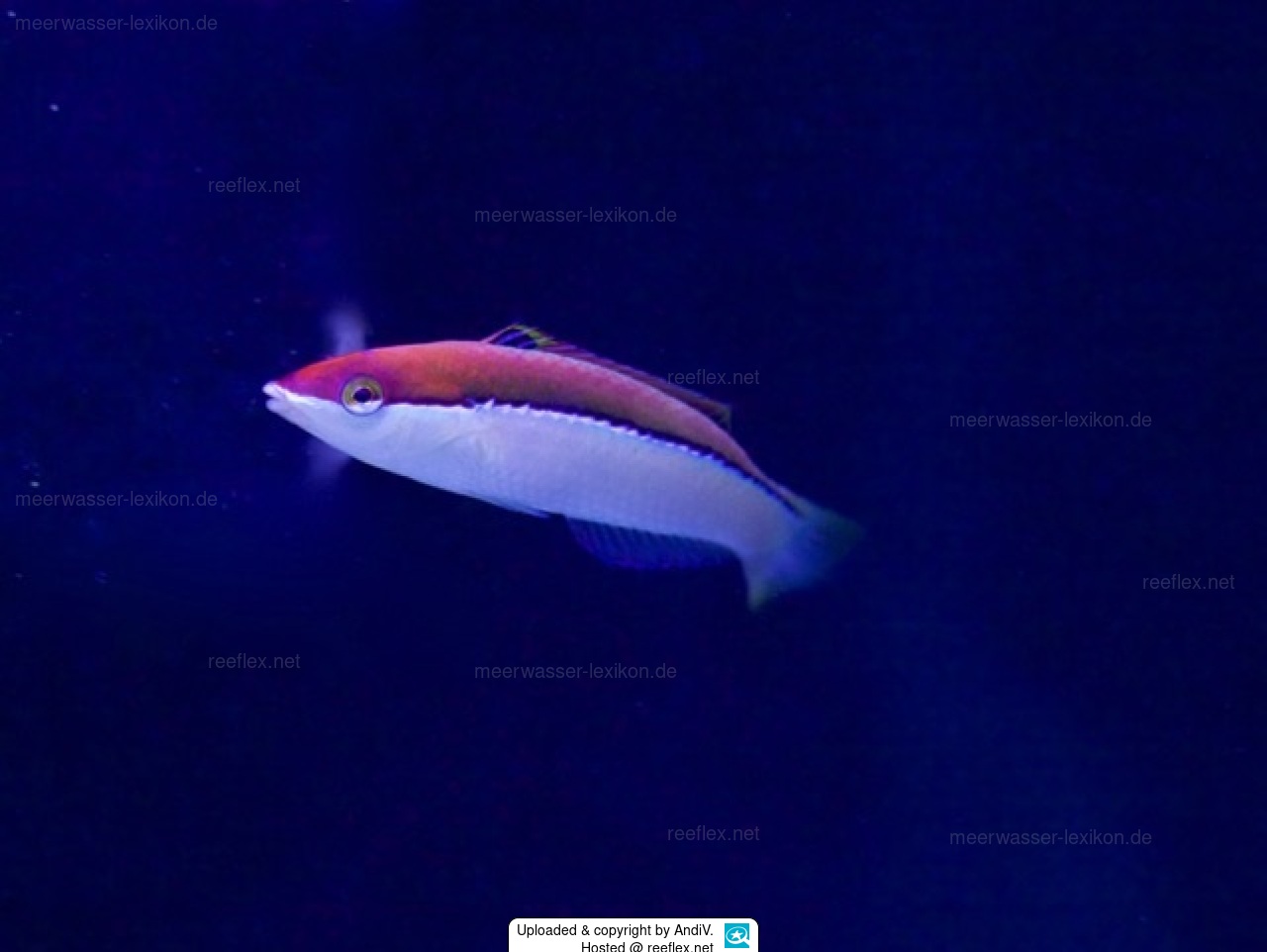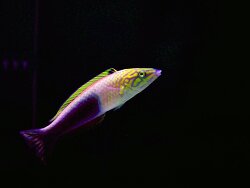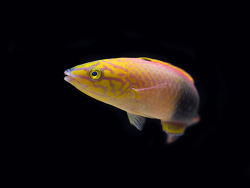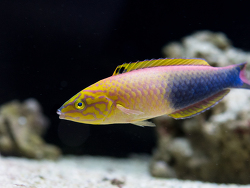Info
Pseudojuloides atavai Randall & Randall, 1981
Polynesian wrasse
Very rare to find in the market. The Pic from De Jong Marinelife shows a male.
Lives in depths up to 12-32 m. Found well above the bottom of exposed seaward reefs and clear lagoons.
Jumping guard
A jumping guard prevents (nocturnal) fish from jumping out.
Wrasses, blennies, hawkfishs and gobies jump out of an unprotected tank in fright if their night rest is disturbed, unfortunately these jumpers are found dried up in the morning on carpets, glass edges or later behind the tank.
https://www.korallenriff.de/en/article/1925_5_Jump_Protection_Solutions_for_Fish_in_the_Aquarium__5_Net_Covers.html
A small night light also helps, as it provides the fish with a means of orientation in the dark!
Polynesian wrasse
Very rare to find in the market. The Pic from De Jong Marinelife shows a male.
Lives in depths up to 12-32 m. Found well above the bottom of exposed seaward reefs and clear lagoons.
Jumping guard
A jumping guard prevents (nocturnal) fish from jumping out.
Wrasses, blennies, hawkfishs and gobies jump out of an unprotected tank in fright if their night rest is disturbed, unfortunately these jumpers are found dried up in the morning on carpets, glass edges or later behind the tank.
https://www.korallenriff.de/en/article/1925_5_Jump_Protection_Solutions_for_Fish_in_the_Aquarium__5_Net_Covers.html
A small night light also helps, as it provides the fish with a means of orientation in the dark!







 AndiV
AndiV
























